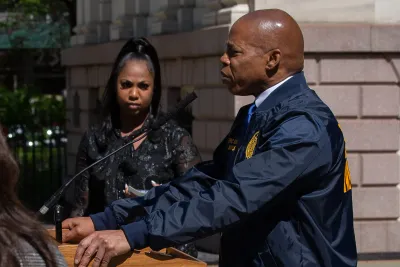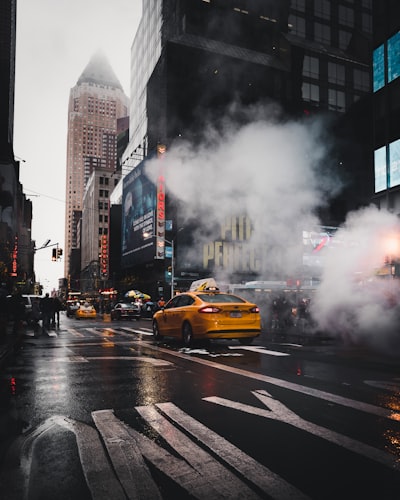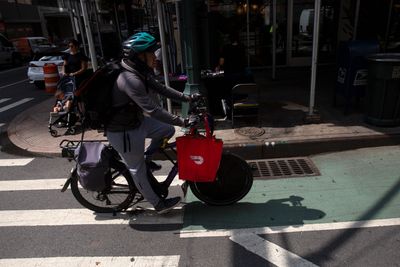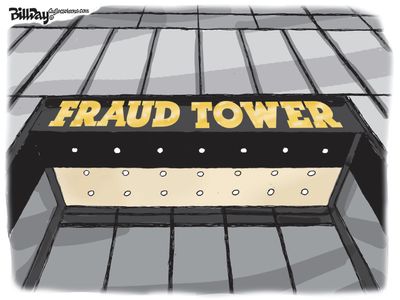Property owners argued that 2019 reforms violated their rights and is “destroying” housing. Yet profits are still plentiful.
Sam Rabiyah and Rachel Holliday Smith, The City
This article was originally published on Oct 2 4:25pm EDT by THE CITY

Buildings line a South Bronx street. | Hiram Alejandro Durán/THE CITY
The Supreme Court has rebuffed a major legal challenge to New York’s rent stabilization law, spelling relief for tenants and putting a damper on landlords’ hopes of gaining control to set the price of housing.
The high court said on Monday that it would not hear the case from two landlord groups in New York, the Rent Stabilization Association (RSA) and Community Housing Improvement Program (CHIP). Together, those owners’ groups represent owners of thousands of rent-stabilized buildings in New York City. As usual, the justices did not give a reason for not taking up the case.
The groups filed their lawsuit challenging the constitutionality of New York’s rent stabilization law in summer 2019, just after Albany lawmakers passed reforms that nearly eliminated landlords’ ability to increase rents on vacant apartments and ultimately remove them from rent regulation.
Since then, CHIP executive director Jay Martin said in a statement on Monday, “the law’s punitive effects have dramatically worsened,” referencing foreclosures among apartment building owners.
“We remain convinced that the law is irrational and vulnerable to more specific challenges,” he said. “One way or another this law must go down, its current form is destroying New York’s housing.”
If the case had moved forward, it could have had significant consequences for New York City’s one million rent stabilized apartments — which account for about half the rentals in the city. With a majority-conservative Supreme Court, landlords had hoped they would get a landmark decision giving property owners relief from New York’s decades-old law regulating rents.
But the Supreme Court’s decision to not grant a writ of certiorari — the legal order for the high court to review a case — does not permanently dismiss the worries of tenants and their advocates. For starters, two other, narrower legal challenges to the law remain before the court if they choose to consider them.
RSA and CHIP are not part of those two cases and do not plan to join them in the future, a representative of CHIP said on Monday.
Oksana Mironova, a tenant advocate and housing policy analyst at the Community Service Society who has been monitoring the legal challenges, said the group is remaining vigilant.
“We are glad to see that the Supreme Court did not take up a frivolous challenge to rent stabilization as a whole, but are watching closely what will happen with the two other cases,” she said.
CHIP says it will look to the state legislature to act on property tax relief, aid in repairing vacant apartments and on what it calls “redlining” by property insurers.
Decades of Increases
The owners behind the lawsuit argued that the rent stabilization law impinges on their right to profit from their property, as enshrined in the Fifth Amendment’s “takings clause” that says the government cannot take property from private owners without compensation.
Still, the latest data on landlord incomes from the Rent Guidelines Board this year suggests that owning rent stabilized property remains profitable in most cases, and has been lucrative over the past few decades.
Released annually, the Board’s Income and Expense Study tracks owners’ “net operating income” or NOI, which is the gross income that a rental property generates minus any expenses aside from debt payments. The average NOI of rent-stabilized landlords took a big hit during COVID, dropping 8% and 9% in 2020 and 2021 respectively, losses not seen since 2003.
This drop, however, comes after three decades of income increases. Landlords of regulated buildings make more than three times as much as they did in 1990, which represents a 50% bump after adjusting for inflation, the study reports.
Embedded iFrame
Data from the report also suggests that rent stabilized units themselves held their revenues more steadily during COVID than market-rate units in the same buildings, and may have helped landlords stave off some of the economic hit from this time. From 2020 to 2021, buildings that were 100% rent stabilized saw 4% net income loss, which was less than half of the rate in buildings that had a mix of rent stabilized and market-rate units. Those saw a 9.1% dip in profits in the same time.
The 2019 rent law and the pandemic coincided with a wave of vacancies in rent stabilized apartments, a trend landlords say is driven by their inability to raise rents sufficiently to renovate vacant units.
THE CITY previously reported a spike of over 60,000 vacant rent stabilized apartments that landlords reported in 2020. More recent data shows this spike to be a COVID-era outlier, suggesting the 2019 rent laws had little long term effect on landlords’ abilities to rent out stabilized apartments.
“CHIP and the RSA have been grasping at straws,” says Sue Susman, organizer with the Coalition to End Apartment Warehousing, a group advocating for policy changes to avoid large-scale vacancies in housing.
“Landlords know that when they get into the business that there are laws, and laws can change,” Susman says. “They chose to be in this business, and if they can’t afford it they can leave this business. But if they stay, they have to abide by the rules.”
THE CITY is an independent, nonprofit news outlet dedicated to hard-hitting reporting that serves the people of New York.




